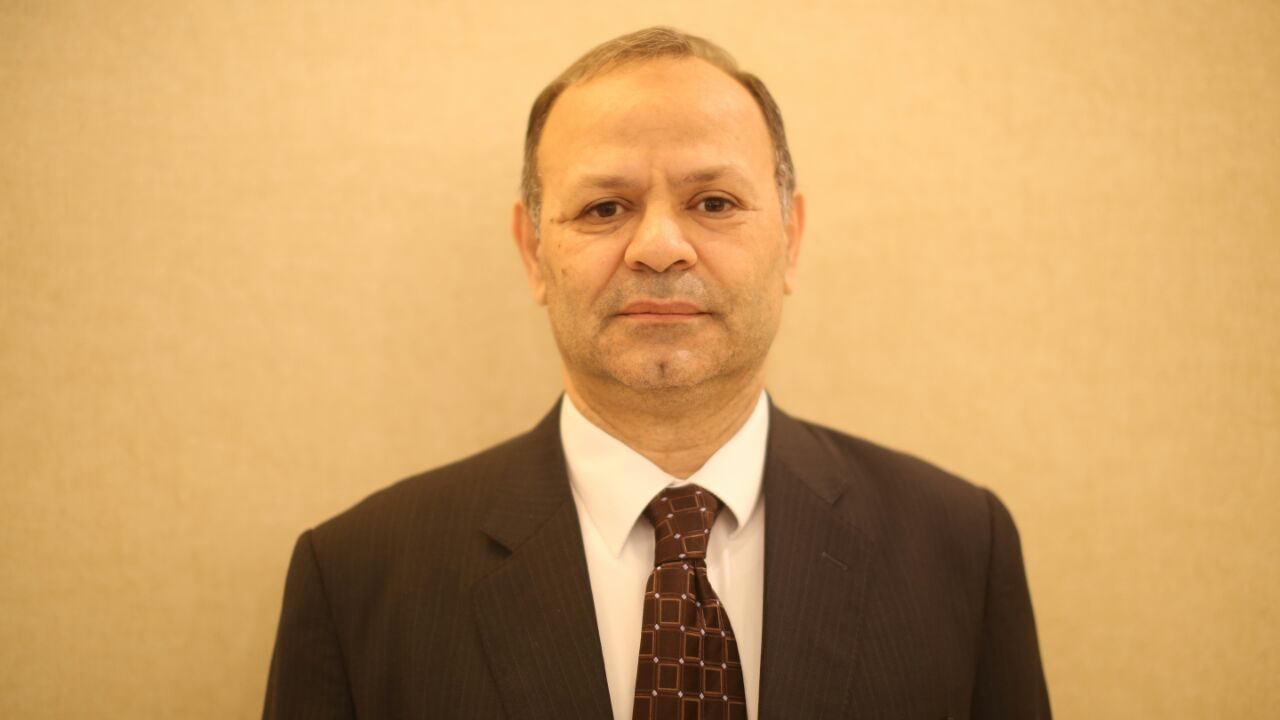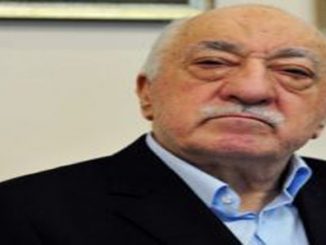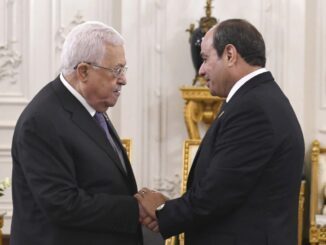
BY: Abdel-Hafez Al-Sawi*
The Foreign exchange reserve in any country has a specific function, namely, to face the fluctuations in the state’s trading with world countries, and to secure its needs so that its economic performance should not be affected. There are other functions used by the central bank to manage the exchange rate through what is known as the open market mechanism.
The open market gives the central bank room for movement in the exchange market to reach the equilibrium price that the central bank’s monetary policy considers as properly reflecting the supply and demand mechanisms.
In case there is an abundance of the major foreign currencies in the market, which could raise the national currency’s price to less than the equilibrium price, the central bank then buys the quantities it deems surplus to the market’s needs, leading to an increase in the foreign exchange reserves.
If there is a decline in the supply of foreign currencies, which could raise their prices, the central bank pumps quantities from its foreign exchange reserves into the market, bringing the price to the equilibrium rate, leading to a decrease in reserves. This policy is called the exchange rate protection.
What is surprising in Egypt’s monetary policy after the January 25 revolution, is that the Central Bank of Egypt (CBE) kept adhering to the policy of exchange rate protection until the entire foreign exchange reserve was wasted, turning into a negative balance in reality. And now, the Egyptian regime accepts the IMF’s requirements for the devaluation of the Egyptian pound or even floating it. However, the organizers of the monetary policy do not care about the economic damage that they have caused to all the economic operators in the Egyptian market, including citizens, foreigners, the public business sector, and the private sector.
* Foreign exchange reserve before the January 25 revolution:
Some go to a wrong assessment of the position of the foreign exchange reserve before the January 25 revolution, which was estimated at $ 36 billion by the end of December 2010. However, the fact is that these reserves included:
- $ 8 billion as foreign investment in Egypt’s domestic public debt,
- $ 10 billion from the sale of Bank of Alexandria to Italian investors,
- the price of selling the license of the third mobile phone network to the Emirati “Etisalat” communications company,
- and the returns achieved from the privatization of some public sector companies, that were sold to foreign partners in dollars.
This means that nearly $ 22 billion of the reserve came from rentier resources, not from returns of production activities.
In addition, Egypt’s main foreign exchange resources, at the time – such as the Suez Canal revenues, the tourism revenues, the remittances of Egyptian expatriates, and the returns from the commodity exports – used to act well, which enabled the existence of a state of stability in the exchange rate and maintaining the foreign exchange reserve.
* Foreign exchange reserve after the revolution:
The first transitional period after the revolution of January 25, 2011, in which the Egyptian Supreme Council of the Armed Forces (ESCAF) assumed power, represents the beginning of the collapse of foreign exchange reserve, where about $ 22 billion were wasted during the period from February 2012 to June 2012, due to the wrong monetary policies, which made it possible for the exit of hot investments, as well as the funds of the Mubarak-era officials from the stock exchange without incurring any losses related to the exchange rate.
The Central Bank of Egypt justified the collapse of foreign exchange reserve – under the ESCAF’s rule during the transitional period – in a press release at the end of January 2013, stating that the decline was due to the fact that the CBE provided foreign exchange to the Egyptian government to import food and oil products, and to repay the due external debt obligations. The CBE also referred the collapse of the foreign exchange reserve to the exit of the foreign investors from the local debt tools (of bills and bonds owed by the government).
* Foreign exchange reserve during President Morsi’s era:
In June 2012 when Dr. Mohamed Morsi – the first democratically elected civilian president in Egypt – came to power, the foreign exchange reserve was $ 15.5 billion. After one year, the foreign exchange reserve became $ 14.9 billion, due to the negative practices of the counter-revolution in the foreign exchange market that were aimed at creating a crisis in the dollar reserves, as well as the rise in oil prices on the international market at that time.
During this year, Egypt obtained deposits to support its foreign exchange reserves amounting to about $ 9 billion, including about $ 6 billion from Qatar as deposits and loans to the CBE, $ 1 billion from Turkey, and $ 2 billion from Libya as deposits without interest at the Central Bank of Egypt.
The impact of the continuing decline in the foreign exchange reserve during President Morsi’s era was limited, whether on the dollar’s official price or on its exchange rate in the black market. The highest price for the dollar on the black market at the time of Morsi amounted to about 7.5 pounds to the dollar, which is 50% less than it is today under the military coup.
The CBE data show that the net foreign assets in June 2013, amounted to 38.2 billion pounds, which means that despite the loans and deposits from foreign countries, the foreign assets at the Central Bank of Egypt were positive.
* Foreign Exchange reserve after the military coup
Egypt’s foreign exchange reserve in September 2016 amounted to about $ 19.5 billion, and the government targets raising it to $ 24 billion, so that it can sign its agreement with the International Monetary Fund (IMF). According to the IMF agreement, Egypt is expected to get a financing package estimated at $ 12 billion, and will borrow another $ 9 billion through agreements with the international institutions, and from the international bond market, as well as the privatization of some public enterprises.
If we look at the reality of the declared foreign exchange reserves by the end of September 2016, we find that they do not involve any own resources, but they rely on deposits and loans from foreign countries.
The Gulf support to the military coup in Egypt had the greatest impact on composing the Egyptian foreign exchange reserves. Despite the Gulf support over the past three years, ranging between 40 to 60 billion dollars, the foreign exchange reserve has not exceeded $ 20 billion at the best estimates (for only one month). Then, the reserve started to decrease due to the dollar gap that prevailed in Egypt, and the decline in all the balances related to Egypt’s external dealings.
In an attempt to keep track of the deposits and loans provided by the foreign countries to support the foreign exchange reserve in Egypt through the data of the CBE’s monthly bulletin for September 2016, the foreign exchange reserve increased in July 2013 by about $ 3.9 billion, in April 2015 by $ 5.2 billion, in August 2016 by one billion dollars, and in September 2016 by about $ 3 billion. These rises coincided with the reports published in the media that Egypt received cash support from the Gulf countries to the foreign exchange reserve.
According to what was released by media, it turns out that Saudi Arabia and the UAE were the largest depositors to support Egypt’s foreign exchange reserve, where the share of each of them reached about $ 6 billion, in addition to two billion dollars from Kuwait, $ 2 billion from Libya, $ 1 billion from Turkey, and $ 1 billion from China. Also, $ 1.5 billion were borrowed in June 2015 from the international market.
However, the data of the CBE’s monthly bulletin for September 2016 show that the net foreign assets of the CBE shifted to a negative balance in November 2015 (9.2 billion Egyptian pounds). This negative balance rose to LE 44.8 in June 2016. That is, in spite of the presence of US $ 15.5 billion in reserves at the Central Bank of Egypt by the end of July 2016, the CBE obligations to the creditors were approximately $ 6 billion bigger than this amount, according to the official exchange rate.
* The IMF loan and the future of the foreign exchange reserves:
There are expectations that Egypt’s access to the financing package under the IMF agreement would lead to the improvement and stability of Egypt’s foreign exchange reserves. However, the economic facts show the opposite, because Egypt’s dollar liabilities outweigh its resources, and thus the draining of reserves will continue as a matter of fact.
Egypt has significantly expanded its borrowing from abroad over the past two years, and if the agreement with the International Monetary Fund was concluded, Egypt’s foreign indebtedness would exceed $ 80 billion, which would increase the bill of the external debt, adding a burden to the budget and dollar reserves.
Second, the Gulf deposits – obtained by the Egyptian regime after the Egypt Economic Development Conference (EEDC) in Sharm el-Sheikh in March, 2015 – necessitate the payment of an interest rate of 2.5%, as well as commitment to starting repayment of the first segment after three years, i.e. after April 2018.
Anyway, if Egypt succeeds in raising its foreign exchange reserves to about $ 24 billion, according to the IMF requirements, this will cover the needs of Egypt’s imports for only about 4.5 months at best estimates.
There are expectations that Egypt will have to pay the import bill for its needs of oil and natural gas after the decision of the Saudi Aramco company to halt its oil supplies to Egypt. This means that Egypt will lose the advantage of getting oil supplies with credit facilities from Saudi Arabia. Accordingly, the Egyptian government will resort to either payment in cash, or payment with more strict credit facilities from other parties.
It is needless to say that Egypt has not recovered its main resources of foreign exchange, which are expected to witness a decline during the coming period due to the recession in the global economy, or the negative developments in the economies of the Arab region.
*Abdel-Hafez Al-Sawi is an Egyptian economist. He has many economic writings, including: The Post-Revolution Balance, the Employment of Zakat Funds in the Muslim World, A Development Vision, and the Egyptian Economy between the Taxes and the Zakat.
(Written exclusively for MEO on Wednesday, Oct. 26, 2016, and translated from Arabic)



